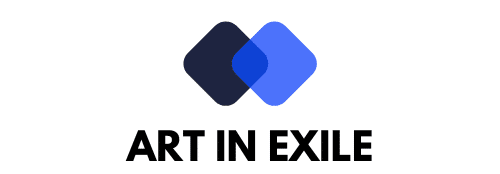In the beautiful game of soccer, every player holds an essential role in contributing to the team’s success. But one role stands out and can often be the difference between a triumphant win or a devastating loss — the goalkeeper. The goalkeeper’s position is unique and crucial as they are the last line of defense and the first line of attack. One key skill that can significantly enhance a goalkeeper’s performance is excellent peripheral vision. So, the question arises, what techniques can enhance peripheral vision in soccer goalkeepers? In this article, we will delve deep into this topic, discussing the importance of peripheral vision, how it works, and the various training drills and exercises that can improve it.
Importance of Peripheral Vision in Soccer
In soccer, the ball is continuously on the move. It’s a fast-paced game where split-second decisions can turn the tide of the match. For a goalkeeper, having a broad field of vision is crucial to keep track of the ball, the players, and the goal all at once.
A lire aussi : What’s the Importance of Psychological Profiling in Combat Sports?
Peripheral vision refers to the part of our vision that occurs outside the very center of gaze. It allows us to detect objects, movements, and actions happening on the side, without needing to turn our heads or shift our gaze. This skill is remarkably beneficial in soccer, especially for goalkeepers. It enables them to see and anticipate the ball’s movement, gauge the positions of other players, and make accurate predictions about the game’s progression.
Understanding How Peripheral Vision Works
To understand how to enhance peripheral vision, it’s important to first comprehend how it works. The human eye is designed in such a way that it can detect light, color, and movement from the side while we are looking ahead. These visual cues are then processed by the brain to make sense of our surrounding environment.
A lire également : What’s the Most Effective Way to Reduce Drag in Competitive Swimming?
In a game of soccer, a goalkeeper’s peripheral vision helps them to monitor the play unfolding on the pitch. Goalkeepers do not simply stand and wait for the ball to come to them. They are continually scanning the field, keeping track of where the ball is, where it might go, and which player is likely to possess it next.
Techniques to Enhance Peripheral Vision
Enhancing peripheral vision involves a series of training drills and exercises aimed at expanding the field of vision and improving the ability to detect movements from the periphery. These techniques don’t just help in vision expansion; they also assist in enhancing focus, concentration, and decision-making skills — all of which are critical for a goalkeeper’s performance.
Eye Stretching Drills
Eye stretching drills involve exercises that stretch the eye muscles, forcing the eyes to move and focus on objects in the periphery. These drills can range from simple exercises like looking up-down and side-to-side without moving the head to more complex ones like tracking a moving object with the eyes.
One popular eye stretching drill is the ‘pen drill,’ where the player holds a pen at arm’s length and focuses on the tip while slowly moving the pen from side to side. This exercise is effective in training the eyes to extend their peripheral reach.
Ball Tracking Drills
Ball tracking drills are designed to enhance the ability to track fast-moving objects like a soccer ball. These drills involve the goalkeeper tracking and predicting the path of a ball as it’s passed around by other players. Tracking the ball’s movement from the corner of their eyes trains their peripheral vision and enhances their ability to predict game scenarios.
Visualization Training
Visualization is another effective technique to enhance peripheral vision. It involves the goalkeeper visualizing various game scenarios and their responses to them. By visualizing, the goalkeeper trains their mind and eyes to anticipate and react to different situations, thereby improving their peripheral vision, focus, and decision-making skills.
Role of a Vision Scholar in Enhancing Peripheral Vision
Vision scholars play a pivotal role in assessing and training a goalkeeper’s peripheral vision. They analyze the goalkeeper’s visual capability and customize training drills to suit their specific needs. These vision scholars also provide valuable insights and feedback, helping the goalkeeper understand their strengths and areas of improvement.
In conclusion, enhancing peripheral vision is not just about increasing the field of vision. It’s about training the eyes and the mind to work together more effectively — to detect, interpret, and react to various situations that unfold during a game. Whether it’s eye stretching drills, ball tracking exercises, or visualization techniques, regularly practicing these can significantly improve a goalkeeper’s peripheral vision and overall performance on the soccer field.
Visual Perception and Decision Making in Soccer
In soccer, a goalkeeper’s decision-making process is influenced by their ability to interpret visual cues. For example, during a penalty kick, the goalkeeper must quickly interpret the kicker’s body language, the ball’s trajectory, and make a decision – all in a matter of seconds.
Visual perception skills such as depth perception, visual acuity, and visual search play a crucial role in this process. Depth perception allows the goalkeeper to judge the distance between themselves, the ball, and other players. Visual acuity refers to the ability to clearly see the details of the moving ball, even at high speeds. Visual search, on the other hand, refers to the goalkeeper’s ability to scan the field and locate the ball, the players, and other important cues.
There are several drills soccer players can engage in to improve these visual skills. For instance, ball control exercises, where the goalkeeper must control a running ball while scanning the field can enhance depth perception and visual search skills. Reaction time drills, where the goalkeeper must respond to a sudden action, can improve visual acuity.
In addition to physical drills, goalkeepers can also benefit from studying game footage. By analyzing how different players move and react in varying game situations, goalkeepers can enhance their ability to predict and interpret visual cues. This strategy, often referred to as a search strategy, is a critical component of a goalkeeper’s decision-making process.
Role of Scholarly Research in Enhancing Peripheral Vision
Scholarly research provides invaluable insights into the science of peripheral vision and its role in sports. Vision scholars often use tools like Google Scholar, Crossref Google, and PubMed Crossref to access a vast array of research papers and studies on the subject.
These studies provide scientific evidence supporting the effectiveness of various training techniques and drills in enhancing peripheral vision, visual acuity, depth perception, and other visual skills. For instance, studies have shown that eye-tracking exercises can improve a goalkeeper’s ability to predict the path of a moving ball. Other research has demonstrated the positive impact of visualization techniques on decision-making skills.
Vision scholars not only contribute to the theory but also apply their knowledge practically. They work closely with soccer players, helping them understand their visual strengths and weaknesses. They design custom training programs, incorporating the most effective drills and exercises based on the latest research findings.
In conclusion, peripheral vision is a critical skill for soccer goalkeepers. It enhances their ability to monitor the game, make accurate predictions, and react effectively. Through a combination of practical drills and exercises, visualization techniques, and scholarly research, goalkeepers can significantly improve their peripheral vision and, ultimately, their performance on the field.











